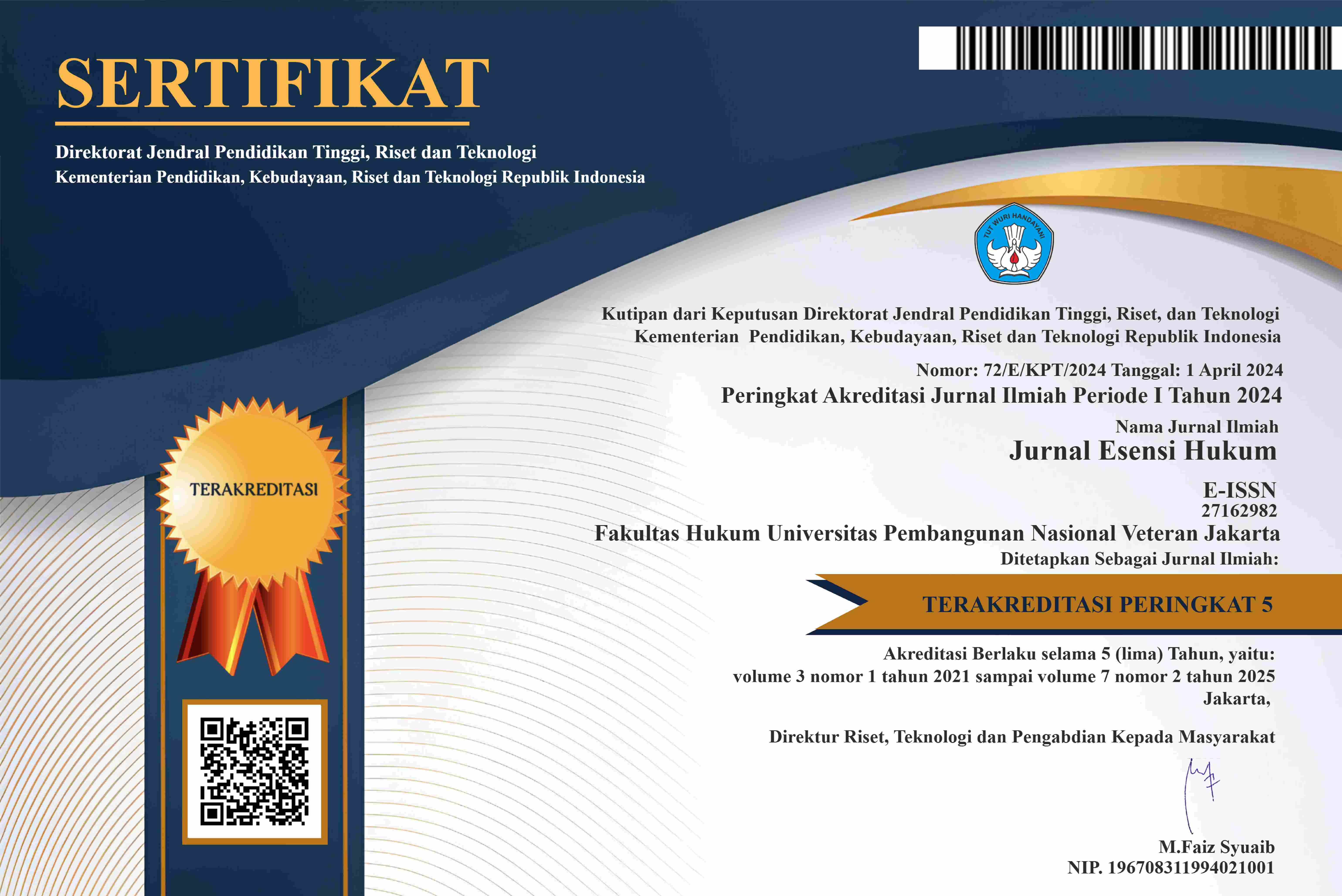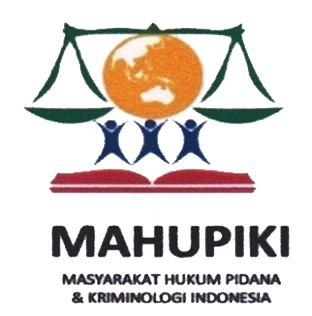Penguatan Kelembagaan Penanganan Pengungsi pada Agenda 2030 Sustainable Development Goals
Abstract
The protracted crisis of refugees as a marginal group is often neglected to fulfill their fundamental rights and well being in the sustainable development agenda. This paper aims to analyze well being indicators of refugees in the sustainable development agenda. The method used is normative research through literature study with a conceptual and analytical approach. The term of refugee are not written explicitly in the sustainable development agenda indicators as of they should be aligned with the general goals of the sustainable agenda, as well as institutional strengthening through policy reform, long-term financing, and requiring active cooperation from various actors in managing and fulfilling refugees fundamental rights, especially for hosting countries and humanitarian institutions at the global and national level.
Downloads
References
Nasution, A. I., (2021), The Changes Impact on State Ministries Nomenclature Toward National Development Progress, Veteran Law Review, 4(2). 94-108 dx.doi.org/10.35586/velrev.v4i2.3159
Samman, E., et. al. (2018), SDG Progress: Fragility, Crisis, and Leaving No One Behind, Overseas Development Institute and International Rescue Committee.
Soekanto, S., & Mamudji, S., (2006) , Penelitian Hukum Normatif, Jakarta: Raja Grafindo Persada,
Grossman, A., & Post, L., (2019), Missing Persons: Refugee Left Out and Left Behind in the Sustain Development Goals, New York.
Asylum Access (2014), Global Refugee Work Rights Report, Asylum Access and Refugee Work Rights Coalition.
UN General Assembly (2016), New York Declaration for Refugees and Migrants, UNGA/A/RES/71/1
United Nations, Transforming our world: the 2030 Agenda for Sustainable Development, United Nations General Assembly Resolution A/RES/70/1
United Nations (2017), Leaving No One Behind: Equality and Non-Discrimination at the Heart of Sustainable Development, United Nations System Chief Executives Board for Coordination, New York
UNHCR (2005), An Introduction to International Protection, Geneva.
UNHCR (2017), Left Behind Refugee Education in Crisis. The UN Refugee Agency, Geneva.
UNHCR (2020), Global Report 2020, The UN Refugee Agency, Geneva.
UNHCR (2020), The Sustainable Development Goals and the Global Compact on Refugees.
World Humanitarian Summit (2016), Leave No One Behind: A Commitment to Address Forced Displacement, Istanbul.
Action Against Hunger (2022), World Hunger: Key Facts and Statistics 2022, https://www.actionagainsthunger.org/world-hunger-facts-statistics
Al Jazeera (2018), Child Marriage on the Rise among Syrian Refugee Girls in Jordan, https://www.aljazeera.com/videos/2018/4/18/child-marriage-on-the-rise-among-syrian-refugee-girls-in-jordan
IAEG-SDGs (2020), Comprehensive Review Proposals Submitted to the 51st Session of the United Nations Statistical Commission for its Consideration. Available from https://unstats.un.org/sdgs/iaeg-sdgs/2020-comprev/UNSC-proposal/
Sustainable Development Goals Indicators, Global Indicator Framework for the Sustainable Development Goals and Targets of the 2030 Agenda for Sustainable Development. Available from: https://unstats.un.org/sdgs/indicators/indicators-list/
Sustainable Development Goals, Tujuan-tujuan Pembangunan Berkelanjutan: Tujuan 10, Available from: https://www.sdg2030indonesia.org/page/18-tujuan-sepuluh
UNHCR, Including Forced Displacement in the SDGs: A New Refugee Indicator. Available from: https://www.unhcr.org/blogs/including-forced-displacement-in-the-sdgs-a-new-refugee-indicator/
UNHCR, The Global Compact on Refugees, Available from: https://www.unhcr.org/the-global-compact-on-refugees
UNHCR (2016), UNHCR Viewpoint: ‘Refugee’ or ‘Migrant’ – Which is Right?, https://www.unhcr.org/news/latest/2016/7/55df0e556/unhcr-viewpoint-refugee-migrant-right.html
UNHCR (2016), Left Behind: Refugee Education in Crisis, https://www.unhcr.org/left-behind/
UNHCR (2018), Turning the Tide: Refugee Education in Crisis, https://www.unhcr.org/turnthetide/
Copyright (c) 2022 Davilla Prawidya Azaria

This work is licensed under a Creative Commons Attribution-ShareAlike 4.0 International License.
Authors who publish with this Journal agree to the following terms:
1. Author retain copyright and grant the journal right of first publication with the work simultaneously licensed under a creative commons attribution license that allow others to share the work within an acknowledgement of the work’s authorship and initial publication of this journal.
2. Authors are able to enter into separate, additional contractual arrangement for the non-exclusive distribution of the journal’s published version of the work (e.g. acknowledgement of its initial publication in this journal).
3. Authors are permitted and encouraged to post their work online (e.g. in institutional repositories or on their websites) prior to and during the submission process, as it can lead to productive exchanges, as well as earlier and greater citation of published works.
4. 
This work is licensed under a Creative Commons Attribution-ShareAlike 4.0 International License.






2.png)

